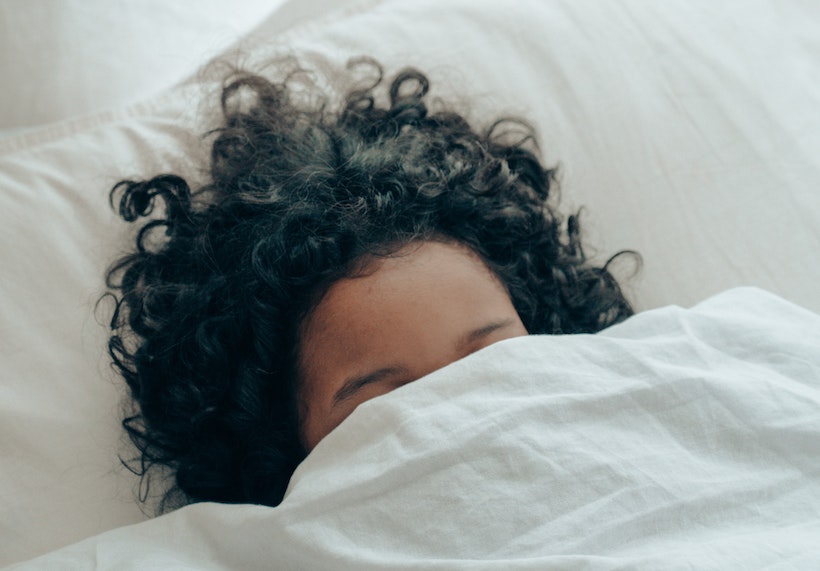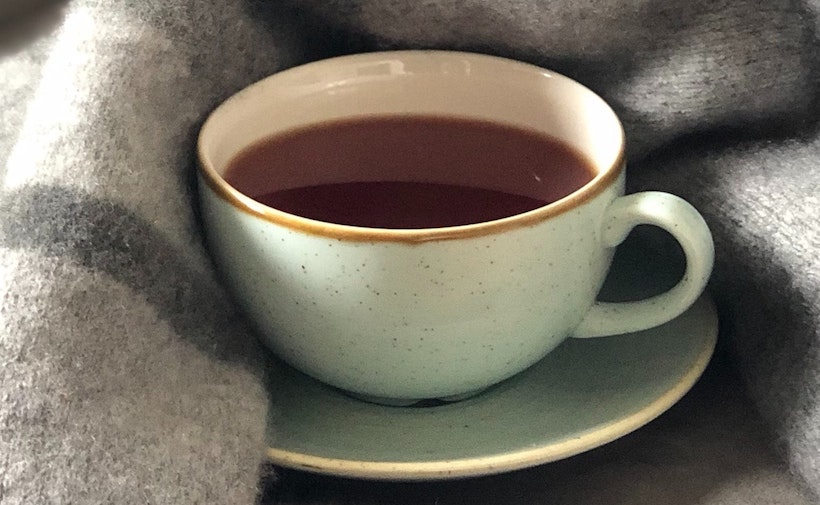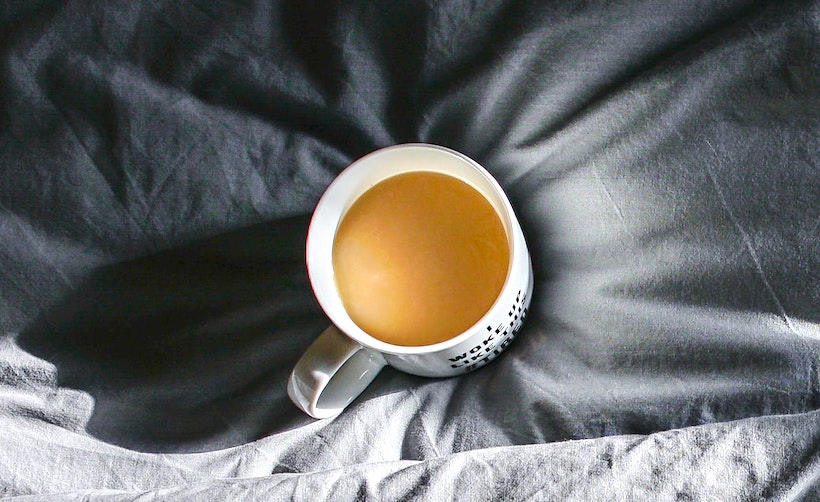You know these two – caffeine and naps. Caffeine, of course, is a stimulant that provides a burst of energy. And naps are brief periods of sleep that reduce tiredness and fatigue.
They seem to be opposites – yet if you combine the two, strangely, you end up with a phenomenon more powerful than its parts: enter the coffee nap.
The coffee nap or nappuccino sounds completely counter-intuitive, doesn't it? Surprisingly, it works.
Read on, and I'll share the research behind this amazing nap style, plus some of the best practices to add nappuccinos to your own life. I promise it won't put you to sleep!
If you usually resort to either chugging a coffee or taking a nap in the mid-afternoon, you should seriously consider putting the two habits together. In short, this combination is a coffee nap.
While it may feel counterproductive to try and nap after drinking a coffee cup, recent studies have shown that short naps under 30 minutes can be a useful tool in boosting the effects of caffeine in your system.
This simple yet highly effective method can help people stay alert through long days – and all it takes is about half an hour of your time.
How is this happening? Shouldn't you have difficulty sleeping after drinking coffee? And shouldn't you feel groggy after a short nap?
Let's discuss the science of the coffee nap next.

The process of drinking coffee and taking a nap has been lovingly dubbed the nappuccino. To better understand this process, we have to examine the three elements at play here — drinking coffee, taking a nap, and combining the two activities.
Consuming coffee has a very particular series of effects on your system. Once it's absorbed by the small intestine and enters your bloodstream, it finds its way to your brain.
Here, the caffeine fits into receptors in the brain that are usually occupied by compounds known as adenosine. Adenosine is naturally created by the brain when we engage in high brain activity levels for extended periods.
The abundance of adenosine meeting these receptors causes us to feel tired, thereby signaling to our body that we need rest. However, when caffeine occupies these spots, there are fewer receptors for the adenosine to occupy.
Now there is a competition between the caffeine molecules and the adenosine to occupy vacant receptor spots in our brain. This is how caffeine helps delay the signal from our brain to prevent our bodies from feeling tired and shutting down. It also keeps us alert, and gives you that caffeinated feeling so many of us enjoy!
When we add a short nap into the mix, something else begins to happen altogether.
On its own, napping is supposed to help clear adenosine from our brain and allow us to create space in the receptors for future inhibitions. However, naps that are longer than 15 to 20 minutes let your brain slip away into deeper sleep stages and may even lead to deeper slow-wave sleep.
Once you enter these deeper stages, you will likely encounter sleep inertia – lowered awareness – following after you wake up from this state. This is the all-too-familiar feeling of drowsiness when you awaken from a deep slumber. However, shorter naps don't cause you to experience sleep inertia – there just isn't enough time for you to enter deep sleep.
This is where the reaction to caffeine in your system comes in!
With the caffeine molecules occupying numerous receptors in your brain and a short nap clearing adenosine out of your system, there are more receptors open to the caffeine now in your bloodstream.
This reduction in competition between the caffeine molecules and the adenosine molecules – thanks to the short nap – allows you to feel awake and refreshed once you're up. Sleeping any longer than 20 minutes, though, can put you at the risk of entering deep sleep, and you're likely to feel groggy when you're up due tot he sleep inertia.
Short naps are the key to making this entire process work.
It all sounds a bit wild, right?
I thought so too at first, but numerous high-quality studies show the nappuccino is a legitimate method of napping. These studies help shed light on what exactly is going on in your body and brain when you take a nappuccino.
One study combined various permutations of consuming caffeine, napping, observing a bright light, and face washing. When ten healthy adults engaged in five different experimental conditions that involved various combinations of these four elements, the most subjectively effective combination – for both reducing sleepiness and increasing performance – was combining caffeine and a nap.
There have been numerous other studies to understand how nappuccinos could be advantageous in specific situations across different professions. Two studies focused on driver alertness and looked at how coffee naps could be beneficial for individuals who spend a lot of time on the road – for both safety and performance.
The first highlighted the fact that coffee naps significantly reduce driver impairment, sleepiness, and drowsiness. The second study focused on the mid-afternoon peak of sleepiness that most drivers experienced and concluded that coffee naps help drastically reduce this peak.
In general, coffee naps are known to boost alertness levels and improve the overall energy level of an individual. And that's not only useful for truck drivers – a nappuccino could be hugely beneficial for a wide range of professions such as nurses and doctors, police officers, and any profession which requires working a late shift.
And – just maybe – it could be useful for you as well.
Coffee naps are one of those concepts that almost seem too good to be true. Although many studies point to the efficacy of the nappuccino, there are some downsides to consider.
First of all, it's important to take a nap at the right time of the day to avoid negatively affect your sleep patterns during the night.
Taking a coffee nap too late in the evening could influence your regular sleep cycle and cause you to stay up at night, thereby negatively affecting your performance the following day. You should aim to take your coffee nap more than six hours before you usually go to bed to avoid disturbances.
If you're going to try this hack, it's best to do it around the mid-day mark for maximum efficiency. If you're interested in going deeper on caffeine timing, I wrote earlier about the right time to drink coffee.
Second, it's important to stick to the 30-minute cut-off mark and not doze off any longer. If you do end up sleeping for an hour (or more...), it could be entirely counterproductive to the whole experience. Sleep inertia kicks in when you nap for long durations or enter a deep sleep state, so avoiding this mistake is crucial.
You could wake up just as tired as you were before your coffee nap, so keep it brief and around 20 minutes.
It's true – it's difficult for many people to fall asleep during the day. Others have it even worse: they lie awake with anxiety watching the clock to avoid oversleeping.
During such situations, it's essential to remain calm and recognize that this method, like everything else in life, just requires a bit of time, patience, and practice to perfect. It's perfectly normal to just rest and not nap – and believe it or not, quiet restfulness or meditation is also beneficial even if you don't fall asleep. So try not to become stressed!
Over time, you'll probably kick the bugs, and perfect the execution of a coffee nap. But if not, don't worry – you're still helping your concentration and performance.

Taking a coffee nap is extremely easy – you just need to stick to the following steps:
If you really get into nappuccinos, you're going to work to improve the process. Here's a collection of questions and answers about coffee naps, which will help you optimize this napping style for you.
The ideal dose for a coffee nap used for most studies amounts is roughly equivalent to two cups of coffee. However, your regular coffee habit and volume works here – the naps and coffee are additive.
Caffeine is the key active ingredient in this process and not necessarily coffee, so if you're not a fan of the black gold, you can always use caffeinated tea instead. The idea is to consume a maximum of 150–200 milligrams of caffeine.
The caffeine can even come from energy drinks, soda, or even chocolate (although it's very hard to eat enough!). However, these aren't a great choice – you produce less saliva while sleeping, so any sugar puts you at a higher risk of cavities.
The ideal time to consume coffee is a maximum of five to 10 minutes before napping. Any longer than that, and this process falls apart: it takes roughly 15-25 minutes for caffeine's effects to kick in.
If you have to choose between napping and drinking coffee, a short nap of under 30 minutes will likely give you more long-term energy (and retire sleep debt). Drinking coffee or caffeine increases your alertness by competing with adenosine, not by mimicking sleep.
You should try to keep your coffee naps under 30 minutes or so (20 minutes is an excellent target). Any longer and you risk sleep latency if you wake up during slow-wave sleep.
The best time of the day to try this method is between 12 pm and 4 pm. Any later than that and you risk ruining your sleep cycle.

Coffee naps seem made up, but they're very real – and they actually do increase performance while decreasing fatigue. By combining the alertness from caffeine with the adenosine-clearing effects of sleep, nappuccinos are a huge boost.
For alternate-schedule or shift workers, or professions that demand peak physical performance all day, they're worth an experiment. As you've seen, they're also useful to help you stay vigilant, for example, while driving long hours at night.
And of course, they're useful for the classic afternoon boost. So let me know if you experiment with coffee naps – I'd love to hear your experience!